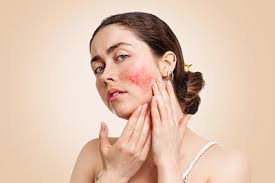
Understanding Common Skin Conditions: Causes, Symptoms, and Treatments
The skin, our largest organ, is susceptible to a myriad of conditions that can affect its health and appearance. These skin conditions range from mild irritations to severe diseases, impacting individuals physically and emotionally. Understanding the causes, symptoms, and treatments of common skin conditions is crucial for effective management and improving quality of life.
Common Skin Conditions
1. Acne
Causes: Acne occurs when hair follicles become clogged with oil and dead skin cells. Factors contributing to acne include hormonal changes, bacteria, certain medications, and diet.
Symptoms: Acne is characterized by the appearance of pimples, blackheads, whiteheads, and cysts primarily on the face, neck, back, and shoulders.
Treatments: Treatment options for acne vary depending on its severity. Over-the-counter topical treatments containing benzoyl peroxide or salicylic acid can be effective for mild cases. Prescription medications, including retinoids, antibiotics, and hormonal treatments, may be necessary for more severe cases. In-office procedures like chemical peels and laser therapy can also help.
2. Eczema (Atopic Dermatitis)
Causes: Eczema is a chronic condition that can be triggered by a combination of genetic and environmental factors. Common triggers include allergens, stress, and irritants like soaps and detergents.
Symptoms: Symptoms of eczema include dry, itchy, and inflamed skin, often appearing on the hands, feet, face, and the inside of elbows and knees. Severe cases can lead to skin cracking and bleeding.
Treatments: Eczema management focuses on reducing inflammation and preventing flare-ups. This includes the use of moisturizers, topical corticosteroids, and avoiding known triggers. Severe cases may require systemic medications or biologic therapies.
3. Psoriasis
Causes: Psoriasis is an autoimmune condition where skin cells multiply rapidly, leading to thick, red, scaly patches. It is believed to be triggered by genetic factors and immune system malfunctions.
Symptoms: The hallmark of psoriasis is red patches covered with silvery scales, often found on the elbows, knees, scalp, and lower back. These patches can be itchy and painful.
Treatments: Treatment for psoriasis includes topical treatments such as corticosteroids and vitamin D analogues, phototherapy, and systemic medications like methotrexate and biologics.
4. Rosacea
Causes: The exact cause of rosacea is unknown, but it is thought to involve a combination of genetic and environmental factors. Triggers include sun exposure, hot drinks, spicy foods, alcohol, and stress.
Symptoms: Rosacea typically presents as redness and visible blood vessels on the face, often accompanied by small, red, pus-filled bumps. It can also cause eye irritation.
Treatments: While there is no cure for rosacea, symptoms can be managed with topical and oral antibiotics, laser therapy, and lifestyle modifications to avoid triggers.
5. Dermatitis
Causes: Dermatitis, including contact dermatitis and seborrheic dermatitis, can be caused by allergens, irritants, or an overgrowth of yeast on the skin.
Symptoms: Contact dermatitis presents as red, itchy, and sometimes blistered skin following exposure to an allergen or irritant. Seborrheic dermatitis, commonly known as dandruff, causes flaky, white to yellowish scales on oily areas such as the scalp and face.
Treatments: Treatment involves avoiding the irritant or allergen, using topical corticosteroids, and antifungal shampoos or creams for seborrheic dermatitis.
6. Vitiligo
Causes: Vitiligo is a condition where the skin loses its pigment cells (melanocytes), leading to white patches. The exact cause is unknown but may involve genetic, autoimmune, and environmental factors.
Symptoms: Vitiligo is characterized by the appearance of white patches on the skin, which can affect any part of the body, including hair and the inside of the mouth.
Treatments: While there is no cure, treatments aim to restore skin color and improve appearance. Options include topical corticosteroids, phototherapy, and skin grafting.
7. Skin Cancer
Causes: Skin cancer, including basal cell carcinoma, squamous cell carcinoma, and melanoma, is primarily caused by exposure to ultraviolet (UV) radiation from the sun or tanning beds.
Symptoms: Symptoms vary depending on the type of skin cancer. Basal cell carcinoma may present as a pearly bump, squamous cell carcinoma as a firm, red nodule, and melanoma as a mole that changes in color, size, or feel, or bleeds.
Treatments: Treatment depends on the type and stage of skin cancer. Options include surgical removal, radiation therapy, chemotherapy, and targeted therapy for advanced cases.
Prevention and Management
1. Skincare Routine
Maintaining a consistent skincare routine can help prevent many common skin conditions. This includes cleansing, moisturizing, and using sunscreen daily to protect against UV damage.
2. Healthy Lifestyle
A healthy lifestyle, including a balanced diet, regular exercise, and adequate hydration, supports overall skin health. Avoiding smoking and excessive alcohol consumption is also beneficial.
3. Regular Check-Ups
Regular dermatological check-ups are crucial for early detection and treatment of skin conditions. Self-examinations can also help identify any changes in the skin that may require professional evaluation.
Conclusion
Understanding common skin conditions, their causes, symptoms, and treatments is essential for effective management and prevention. By adopting a proactive approach to skincare and seeking timely medical advice, individuals can maintain healthy skin and improve their overall well-being.